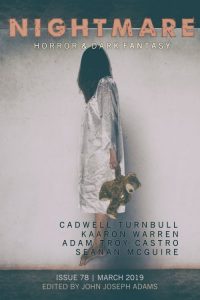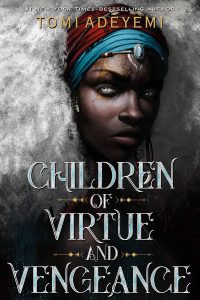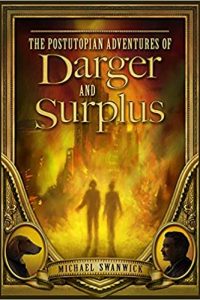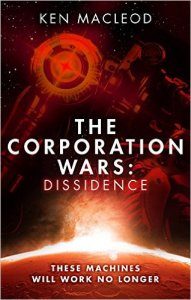Paula Guran Reviews Short Fiction: Nightmare, The Dark, Uncanny, and Black Static
 Nightmare 2/19, 3/19
Nightmare 2/19, 3/19
The Dark 1/19, 2/19
Uncanny 1-2/19
Black Static 1-2/19
Six weeks into 2019 (as I write) and I’m at the fast dwindling point where I foolishly feel I have a handle on most of the new fiction….
Nightmare #77 offers two original stories: “Quiet the Dead” by Micah Dean Hicks and “58 Rules to Ensure Your Husband Loves You Forever” by Rafeeat Aliyu.
“Quiet the Dead”: There’s nothing worse than a haunted pork-processing plant: “spirits circling the plant, lost ghosts who had only ever known pig work… swept up to… the only real employer left in town.” Actually, the entire town of Swine Hill is haunted. Young Kay is burdened with a particularly violent ghost as well as the care of her two even younger siblings. Fifteen-year-old Oscar’s ghost takes him through “an entire lifetime in a day” from infant to elder and back again. Her sister, Mira, has a secret she is desperate to share, but is haunted by a ghost that won’t let her speak. The story develops after Kay, driven by her ghost, attacks a fellow worker and loses her much-needed job at the plant. I wanted to love this story because the idea of a dying town “so swollen with spirits” that people are accustomed to “sharing themselves with the dead” is full of potential and ripe with possibility. Despite uneven bursts of stylish writing, the structure and execution of the story is so flawed, the ending so lacking that, instead, I am left hoping that I see more polished examples of Hicks’s work in the future.
In “58 Rules to Ensure Your Husband Loves You Forever”, Iman just wants her husband, Kevin, to love her and be faithful. She turns to her Aunt Clara, who is rumored to have connections to witch doctors and the like. Kevin is soon under her control, but he’s also turned into something (at least) closely resembling a zombie, despite Iman’s apparent adherence to “the rules.” Clara reminds her of a rule she has not followed. There are more layers to this darkly humorous yet unnerving story than can be briefly covered here, so I advise a read.
From Nightmare #78, we have “Example” by Adam-Troy Castro. Hector, although innocent, was convicted of murder and has been a condemned man for 20 years. On the eve of his scheduled execution, he is told he has been cleared of the crime, but for the good of society will still be killed. Castro is a master of setting up his story, even when the elements are somewhat far-fetched. The crux of the story – that it is “now illegal for any sentence of death to be commuted or overturned, under any circumstances” – is not as implausible as the other details of the tale. Well written, but not for me.
Cadwell Turnbull‘s “All the Hidden Places” is the second story of the issue. Nikki’s parents survived the zombie-plague apocalypse before she was born. Having departed the Virgin Islands two years before, when her mother died, Nikki and her father journey to an island in a frozen lake in Michigan. Dad has a big secret that will soon be revealed. The story is cleanly written, but I feel I’ve read it – or the premise at least – more than once before. Predictability means the reader is not engaged, so I’m not a fair judge. If you like post-zompocalypse stories, you’ll have to judge for yourself.
The first of two new stories from The Dark #44, Sara Saab‘s “Burrowing Machines” is a stellar and unsettling story set in subterranean London. Jo’s an engineer working nights on a new tunnel for the London Underground and, at first, the project is progressing well. Seemingly minor unease builds, followed by the “obviously weird” and then the tragic. The rest of the world may not yet see it, but Jo briefly touches the monstrous and sees the whole – and so do we. Darkness is particularly disturbing when it is revealed below the mundane when the past inhabits the present.
Also from #44, “Tansy” by Angela Fu is two horrific stories – or maybe just one – involving children. Intense. Poetic. Both surreal and too real. Less than 2,500 very disturbing words. The magazine is named The Dark for good reason.
“The Crying Bride” by Carrie Laben in The Dark #45 is a great yarn: the story intermeshes realistic first-person narrative with elements of the supernatural to become an entertaining and coherent whole. The 89-year-old narrator is both a levelheaded scientist and the beneficiary of a dead woman’s powers from beyond the grave. She’s also matter-of-fact about some pretty dark woo-woo doings. Her voice is so convincing, however, the paradoxes knit together seamlessly.
Julia August‘s “Butterflies and Hurricanes” is the second original from #45. Miss Susanna Morley is a Finder of Things and when she is commissioned to discover a thousand true names, she easily accepts the job. After all, though it “was a pity you had to crack open a thing’s bones to suck its marrow out” to discover its “secret inner name… that betrayed everything you needed to know about it,” she can accomplish the task primarily with various plants. Similarly, it is no challenge to ascertain that “the Conjuror Supreme, a maker of disconcerting devices and money” is behind the task. She’s then asked to find 200 more names – somewhat harder as it requires the lives of small animals, but Susanna is all too aware that gentility won’t earn a woman’s rent. Set in an alternate England of magic, clockwork song-birds, automatons, bonnets, carriages, and sixpence cups of tea, this type of fantasy world is a subgenre these days, and the necessity of dark powers to survive in such a world is a given. August handles it all adroitly, but when such things are condensed into the short form, some readers might be a bit taken aback. As said above, the periodical is called The Dark.
Uncanny #26 offers six original stories. In Fran Wilde‘s splendid “A Catalog of Storms“, the weather has been “broken” and “storms got smarter than us.” Folks known as weathermen, however, learn to fight the storms by naming them and even physically confronting them. In retaliation, the weather hunts down the weathermen who are no longer exactly human and not even exactly alive. Sisters Sila, Varyl, and Lillit’s maternal great-aunt was a weatherman and now Lilit has become one, too. Sila and Varyl mourn the loss of their sister but admire her heroism and hope they too can become weathermen; their mother mourns the loss of one child and fears the loss of her two remaining. The story is interspersed with and built partly on “catalog” entries: lists and descriptions of named storms. When Sila begins naming storms, her catalog reflects the family’s grief, anger, and strain. Metaphorical and poetic, the story beautifully conveys humankind’s effect on nature as well as a single family’s heartbreak and bravery.
An “event” has ended civilization in Marissa Lingen‘s “The Thing, with Feathers“. Some survivors possess magic and fight whatever it is that threatens what’s left of humanity. Val uses her small powers to keep a lighthouse that helps defend against strangely transformed, now dangerous birds and the lake – evidently, whatever the event was came from the (polluted?) waters of the world. Val has no real hope left, but still faithfully fulfills her duties. Then Lucian, in need of her help to heal his lost connection to magic, arrives. He still possesses a measure of optimism. Lingen offers an eloquent and engaging glimpse into a unique world and two characters we quickly become invested in.
Indra Lauryn‘s “Dustdaughter” introduces us to nine-year-old Dust at the beginning of her discovery of who and what she truly is, as well as the family of powerful women to which she belongs even though her mother rejected it. This is a magical story that seems to be just the first view of some delightful characters.
Civilization has ended, the stars have disappeared, but love and poetry still can sustain in Natalia Theodoridou‘s “Poems Written While“. Senaa Ahmad‘s “Nothing to Fear, Nothing to Fear” is a Bradbury-esque story of siblings and summer and loss and possibly science. Except the kids are brown and Muslim. They’re both good stories, but not outstanding. O’Leary, April’s lover and fellow musician, is transformed by a sinister family homestead in “The Willows” by Delilah S. Dawson. Atmospheric, but neither characters nor environment quite work for me.
In the first of five new stories in Black Static #67, Ralph Robert Moore posits some inventive new conventions about ghosts and combines them with some old traditions in “Do Not Pet“. Old Karl loses a middle-aged son to suicide; younger Tess’s father has recently passed away. Both have journeyed to a long-abandoned factory where one can observe ghosts – much “like you drive through a wildlife preserve to see lions and elephants from the safety of your car….” The ghost safari takes place inside the confines of the factory, not entirely without danger, but controlled. Of course, the real dangers are not immediately apparent. It’s probably personal, but I was far more interested in the concept of the ghost safari and its proprietors than what the story became. That, a few odd details, and some overly long exposition knocked this one down a notch for me, but it’s still a worthwhile read.
Nick Baptiste, the third mate on a container ship, has been at sea for seven years and trying to forget the past for just as long in “Shore Leave” by Mike O’Driscoll. On leave in Manila, he finds a way – via djinn – to lose his memories. Needless to say, we should all be careful of what we wish for. I have some quibbles with the mythic basis of this one and could too easily envision it in a pulp illustrated with a seductive female “genie.” Some may consider that a recommendation; others may want to pass it by for the same reasons.
Hazel, in “Silence of Prayer” by Kristi DeMeester, is only 17 but knowledgeable about the imperfections of humanity. She finds a god to worship in the woods. Eventually she learns true devotion may not be all she thought it was. DeMeester portrays the semi-feral Hazel well, but, as confused and abused as she may be, it is still difficult to see her worshipping this false deity for six months.
A strange fog shrouds the world, or at least the pub of Michelle Ann King‘s very brief “In the Fog, There’s Nothing but Grey“. The news calls it “Idiopathic Amnesia Syndrome,” but whatever it is it robs you of memory. A nice, moody vignette, but not enough to be a story.
Dad David’s childhood home is a creepy old house in the woods and he has no reason to have fond memories of it. His son Brad thinks a buck is coming to the window and telling him to come into the woods. Poor cell phone reception. Strange dreams. Family secrets and unresolved issues in the depths of a Vermont winter. In brief: it is all irrational, but the rational thing would be get the fuck out of there ASAP. But Eric Schaller‘s “All We Inherit” wouldn’t be a story if David did that. Instead, David endangers his son but [SPOILER ALERT!] luckily, together they slay a monster. The writing’s good, but again, a personal reaction: déjà vu overwhelms and ennui ensues.
Paula Guran has edited more than 40 science fiction, fantasy, and horror anthologies and more than 50 novels and collections featuring the same. She’s reviewed and written articles for dozens of publications. She lives in Akron, Ohio, near enough to her grandchildren to frequently be indulgent.
This review and more like it in the April 2019 issue of Locus.
 While you are here, please take a moment to support Locus with a one-time or recurring donation. We rely on reader donations to keep the magazine and site going, and would like to keep the site paywall free, but WE NEED YOUR FINANCIAL SUPPORT to continue quality coverage of the science fiction and fantasy field.
While you are here, please take a moment to support Locus with a one-time or recurring donation. We rely on reader donations to keep the magazine and site going, and would like to keep the site paywall free, but WE NEED YOUR FINANCIAL SUPPORT to continue quality coverage of the science fiction and fantasy field.








